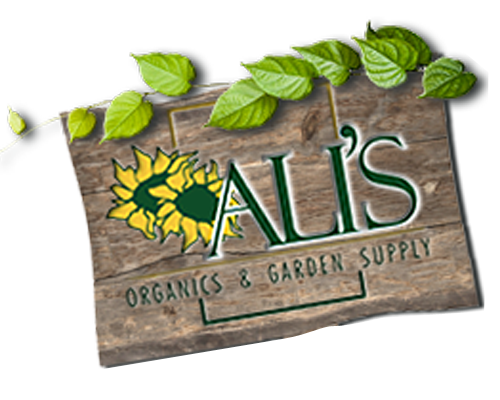What to Plant, How to Prepare, and Tips for a Thriving Homestead Garden
Posted April 05, 2025

April in Zone 8 is like opening the gate to gardening season. The soil is warming, days are longer, and plants are waking up from their winter nap. Whether you're new to gardening or a seasoned homesteader, this month is pivotal for setting up a garden that will feed your family and support your ecosystem through the seasons. Adjust your planting time to your zone. Our Hurricane Valley frost free date is April 10th.
🌱 What to Plant in April
By April, you're officially in spring mode. This is a great time to direct sow and transplant a wide variety of crops. Here's what to focus on:
Direct Sow Now:
-
Bush Beans – Easy to grow and quick to yield. Make repeat sowings every couple of weeks for a steady harvest.
-
Beets, Carrots, Turnips, and Radishes – These root crops do well now before the heat of summer.
-
Lettuce, Spinach, Arugula, and Mustard Greens – Great for quick spring salads. Keep sowing until it gets too hot.
-
Squash and Melons – If the soil is warm (65°F+), you can sow directly.
Transplant Now:
-
Tomatoes, Peppers, and Eggplant – Harden off first and plant out when the danger of frost is past (usually by early to mid-April in Zone 8).
-
Cabbage, Broccoli, and Cauliflower – Still time to tuck these into shadier garden spots to finish before the heat hits.
-
Herbs like basil, parsley, dill, thyme, and oregano.
🌼 Best Pollinator Plants for the Vegetable Garden
If you want great fruit set and bigger harvests, you’ll need pollinators on your team. Here are top choices for attracting bees, butterflies, and beneficial insects:
-
Borage – Self-sows, blooms for months, and bees adore it.
-
Zinnias – Easy from seed and loved by pollinators.
-
Calendula – Edible flowers with sticky centers that attract pollinators and trap aphids.
-
Nasturtiums – Dual-purpose as pest decoys and pollinator magnets.
-
Cosmos – A magnet for bees and hoverflies.
-
Yarrow, Bee Balm, and Echinacea – Excellent for supporting native bees and beneficial insects.
Tip: Plant flowers at the edges or interspersed among vegetables to boost pollination and overall garden health.
🌞 April vs. May: Timing is Everything
Some crops, like cucumbers, sweet potatoes, and okra, prefer the real heat of late spring to thrive. While April feels like go-time, planting too early can stunt warm-season crops or invite pests and diseases.
❗Why Wait on Cucumbers?
Cucumbers love warm soil (55°F+) and nighttime temps above 60°F. If planted too early:
-
Germination is slow or fails.
-
Plants grow sluggishly and are more vulnerable to downy mildew and cucumber beetles.
-
You'll end up with a weaker plant and smaller yield.
Wait until late April or early May for cucumbers and other heat lovers like melons, peanuts, and southern peas for best results.
🌿 Fertilizing and Amending the Soil
Healthy soil = healthy plants. Whether you're gardening in raised beds, in-ground, or using containers, give your soil a boost:
Top Tips for Feeding the Garden:
-
Compost – Add a layer of finished compost before planting. This improves structure, feeds soil microbes, and adds nutrients.
-
Organic Fertilizer – Balanced blends like 3-3-3 or 4-6-2 are great for most crops. Root crops benefit from lower nitrogen.
-
Worm Castings – Especially helpful around transplants like tomatoes and peppers.
-
Soil Tests – If you're unsure, test your soil to determine what amendments you need.
Pro Tip: Inoculate legumes like beans and peas with Rhizobium bacteria for better nitrogen-fixing and healthier plants.
🔥 Preparing for the Summer Heat
As you plan your garden, it’s smart to start thinking ahead to summer’s challenges:
-
Mulch now to trap moisture and suppress weeds. Use straw, shredded leaves, or grass clippings.
-
Install drip irrigation or soaker hoses—they save water and keep leaves dry, reducing disease.
-
Think about shade—tall plants like corn or trellised cucumbers can provide shelter for tender greens or herbs.
-
Plan succession plantings—when your lettuce bolts, be ready to plant heat-lovers like basil or southern peas in their place.
-
Start sweet potato slips indoors or buy them now—they’ll be ready to plant when the soil is hot.
🏡 Tips for the Homestead Garden
For those growing on a homestead, even a small one, here are a few bonus tips:
-
Grow dual-purpose crops like beans (green and dry), corn (fresh and for meal), and winter squash.
-
Dedicate space for seed-saving to ensure long-term sustainability.
-
Intercrop for space and time—plant radishes with slower crops like corn or squash.
-
Rotate animal manures like composted chicken or goat bedding into fall beds to improve fertility.
-
Grow medicinal herbs such as chamomile, calendula, and lemon balm along garden edges.
-
Fence your garden—you’re not the only one hungry in April. Deer, rabbits, and raccoons are active now too!
🌻 Wrapping It Up
April in Zone 8 is bursting with gardening potential. Whether you’re sowing your first seeds or managing a full homestead plot, the key is to plant smart, support your soil, welcome pollinators, and plan for the heat ahead. With a little preparation and ongoing care, your garden will reward you with months of fresh food and vibrant life.
Happy planting—and here’s to a season full of growth and good harvests!



Comments (0 Comments)
There are no comments.
Post Comment